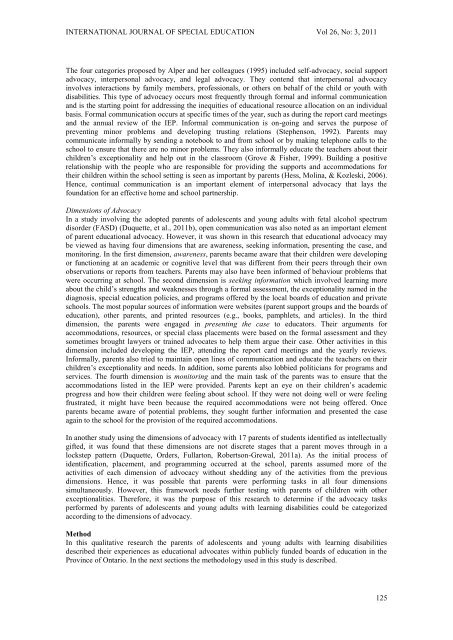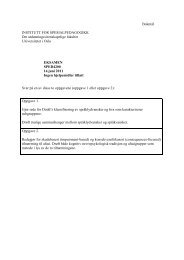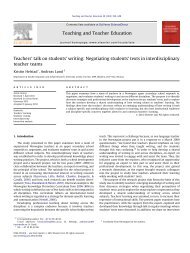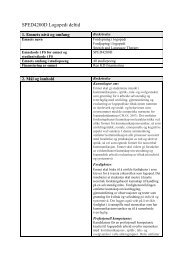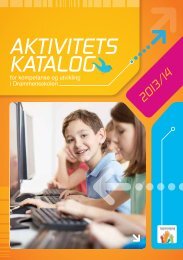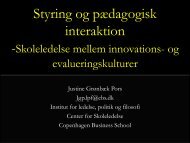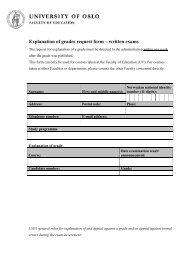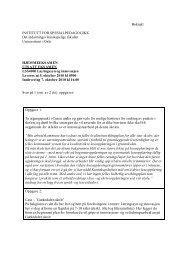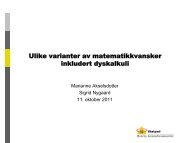International Journal Special Education
International Journal Special Education
International Journal Special Education
You also want an ePaper? Increase the reach of your titles
YUMPU automatically turns print PDFs into web optimized ePapers that Google loves.
INTERNATIONAL JOURNAL OF SPECIAL EDUCATION Vol 26, No: 3, 2011The four categories proposed by Alper and her colleagues (1995) included self-advocacy, social supportadvocacy, interpersonal advocacy, and legal advocacy. They contend that interpersonal advocacyinvolves interactions by family members, professionals, or others on behalf of the child or youth withdisabilities. This type of advocacy occurs most frequently through formal and informal communicationand is the starting point for addressing the inequities of educational resource allocation on an individualbasis. Formal communication occurs at specific times of the year, such as during the report card meetingsand the annual review of the IEP. Informal communication is on-going and serves the purpose ofpreventing minor problems and developing trusting relations (Stephenson, 1992). Parents maycommunicate informally by sending a notebook to and from school or by making telephone calls to theschool to ensure that there are no minor problems. They also informally educate the teachers about theirchildren’s exceptionality and help out in the classroom (Grove & Fisher, 1999). Building a positiverelationship with the people who are responsible for providing the supports and accommodations fortheir children within the school setting is seen as important by parents (Hess, Molina, & Kozleski, 2006).Hence, continual communication is an important element of interpersonal advocacy that lays thefoundation for an effective home and school partnership.Dimensions of AdvocacyIn a study involving the adopted parents of adolescents and young adults with fetal alcohol spectrumdisorder (FASD) (Duquette, et al., 2011b), open communication was also noted as an important elementof parent educational advocacy. However, it was shown in this research that educational advocacy maybe viewed as having four dimensions that are awareness, seeking information, presenting the case, andmonitoring. In the first dimension, awareness, parents became aware that their children were developingor functioning at an academic or cognitive level that was different from their peers through their ownobservations or reports from teachers. Parents may also have been informed of behaviour problems thatwere occurring at school. The second dimension is seeking information which involved learning moreabout the child’s strengths and weaknesses through a formal assessment, the exceptionality named in thediagnosis, special education policies, and programs offered by the local boards of education and privateschools. The most popular sources of information were websites (parent support groups and the boards ofeducation), other parents, and printed resources (e.g., books, pamphlets, and articles). In the thirddimension, the parents were engaged in presenting the case to educators. Their arguments foraccommodations, resources, or special class placements were based on the formal assessment and theysometimes brought lawyers or trained advocates to help them argue their case. Other activities in thisdimension included developing the IEP, attending the report card meetings and the yearly reviews.Informally, parents also tried to maintain open lines of communication and educate the teachers on theirchildren’s exceptionality and needs. In addition, some parents also lobbied politicians for programs andservices. The fourth dimension is monitoring and the main task of the parents was to ensure that theaccommodations listed in the IEP were provided. Parents kept an eye on their children’s academicprogress and how their children were feeling about school. If they were not doing well or were feelingfrustrated, it might have been because the required accommodations were not being offered. Onceparents became aware of potential problems, they sought further information and presented the caseagain to the school for the provision of the required accommodations.In another study using the dimensions of advocacy with 17 parents of students identified as intellectuallygifted, it was found that these dimensions are not discrete stages that a parent moves through in alockstep pattern (Duquette, Orders, Fullarton, Robertson-Grewal, 2011a). As the initial process ofidentification, placement, and programming occurred at the school, parents assumed more of theactivities of each dimension of advocacy without shedding any of the activities from the previousdimensions. Hence, it was possible that parents were performing tasks in all four dimensionssimultaneously. However, this framework needs further testing with parents of children with otherexceptionalities. Therefore, it was the purpose of this research to determine if the advocacy tasksperformed by parents of adolescents and young adults with learning disabilities could be categorizedaccording to the dimensions of advocacy.MethodIn this qualitative research the parents of adolescents and young adults with learning disabilitiesdescribed their experiences as educational advocates within publicly funded boards of education in theProvince of Ontario. In the next sections the methodology used in this study is described.125


